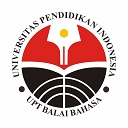Structure, Usage, and Meaning of Japanese Conditional Sentences “to”, “tara”, “ba”, and “nara” in Japanese Spoken Language: A Study Case of Dr. Stone Animation
Abstract
This study aims to analyze the structure, usage, and meaning of Japanese conditional sentences (jouken hyougen) with the patterns of “to”, “tara”, “ba”, “nara” in the Japanese spoken language. By using qualitative methods, this study is collecting conversational data taken from Japanese Animation Dr. Stone. The data in the form of sentences were analyzed based on their structure, usage, and meaning. The results of this study found that Japanese conditional sentences with the patterns of “to”, “tara”, “ba”, and “nara” in Dr. Stone animation have a structure that tends to be attached to verb and noun predicates. In the spoken languages in Japanese Animation Dr. Stone, there were also found that some conditional sentences have different structures and change of predicate structure other than the usual structure mentioned in Japanese textbooks. Further, the conditional sentence “to” in Dr. Stone’s animation tends to be used to express general conditions or knowledge known by speakers, speech partners, and the general public. On the other hand, the conditional sentences “tara”, “ba”, and “nara” in Dr. Stone animation tends to be used to express conditions that may occur or the conditions that are assumed will occur by the speaker. Regarding the meaning of the conditional sentence “to” in Dr. Stone’s animation, “to” has the meaning of naturally occurring phenomena such as chemical reactions and physics, while the conditional sentences “tara”, “ba”, and “nara” in Dr. Stone animation have the meaning of conjecture or assumption, awareness or perception, and suggestion.
Keywords
Full Text:
PDFReferences
Adriani, R., & Yani, D. (2020). Analisis Penggunaan Jouken Hyougen Pada Novel “Sensei ha Mahoukkai?” Karya Nakamura Kouzo (Kajian: Struktur dan Makna) [Analysis of the Use of Jouken Hyougen in the Novel “Sensei ha Mahoukkai?” The work of Nakamura Kouzo (Study: Structure and Meaning)]. Omiyage (Jurnal Bahasa dan Pembelajaran Bahasa Jepang, 3, 1-10.
Artadi, A., & Setiawan, H. (2020). Penggunaan dan Fungsi Kalimat Kondisional Bahasa Jepang “to”, “tara”, “reba”, dan “nara” Berdasarkan Modalitas dan Teori Teritori Informasi [The Use and Functions of Japanese Conditional Sentences “to”, “tara”, “reba”, and “ nara” Based on Modalities and Information Territory Theory]. JLA (Jurnal Lingua Applicata), 4, 41-52.
Cho, Y. (2020). Kangokujin Nihon gogakushuusha no jouken hyougen `to’ to `tara’ no shiyou ni okeru ninshiki oyobi shidou-hou [Korean Japanese Learners’ Recognition of the Use of Conditional Expressions ‘To’ and ‘Tara’ and the Teaching Method]. Nihongo Kyouiku, 94, 77-70. Retrieved from https://papersearch.net/thesis/article.asp?key=3851248
Ichikawa, Y. (2005). Shokyu Nihongo Bunpou to Oshiekata no Pointo (Point of Basic Japanese Grammar and Teaching). Tokyo: 3A Corporation.
Indraswari, T. I. (2017). Analisis Kontrastif Kalau dalam Bahasa Indonesia dengan To, Ba, Tara dalam Bahasa Jepang [Contrastive Analysis Kalau in Indonesian with To, Ba, Tara in Japanese]. Journal of Japanese Language Education & Linguistics, 1, 133-154.
Iori, I. (2001). Atarashii Nihongo Gakunyumon [New Introduction to Japanese]. Tokyo: 3A Corporation.
Iori, I., Takanashi, S., Nakanishi, K., & Yamada, T. (2001). Chuukyu wo oshieru Hito no Tame Nihongo Bunpou Handobukku [Japanese Grammar Handbook for Intermediate and Advanced Teachers]. Tokyo: 3A Corporation.
Kartika, D. & Irma, I. (2021). Conditional sentences in Japanese and English: A contrastive study. Leksema: Jurnal Bahasa dan Sastra, 6(1), 77-89. https://doi.org/10.22515/ljbs.v6i1.3420
Kim, J. (2018). A Contrastive study of Korean and Japanese on conditional clauses without main clauses. The Journal of Linguistic Science, 85, 99-119. Retrieved from https://cir.nii.ac.jp/crid/1050007314768928256
Kim, K. (2017). Study on the Japanese conditional expression nara. The Japanese Language Association of Korea. 54, 3-16. DOI 10.14817/jlak.2017.54.3.
Kikuta, C. U. (2018). Development of conditional imperatives in Japanese: A diachronic constructional approach. Cognitive Linguistics, 29(2), 235–273. doi:10.1515/cog-2014-0081
Kurasawa, E., & Noji, J. (2004). Asakura Kokugo Kyouiku Kouza <3> Hanashi Kotoba no Kyouiku [Asakura Japanese Language Education Course <3> Spoken Language Education]. Tokyo: Asakura Shoten.
Malabar, S. (2015). Sosiolinguistik [Sociolinguistic]. Gorontalo: Ideas Publishing.
Nurhayati, I. K. (2014). Penerjemahan kalimat kondisional bahasa Indonesia ke dalam bahasa Inggris: Kajian sintaksis dan semantik [Translating Indonesian conditional sentences into English: Syntactic and semantic studies]. Bahasa dan Seni: Jurnal Bahasa, Sastra, Seni, dan Pengajarannya, 42(2). Retrieved from http://journal2.um.ac.id/index.php/jbs/article/view/73
Sang, Z. (2021). Insubordinate Conditional Clauses Formed by Japanese Conjunction -ba. International Journal of Linguistics, Literature, and Translation, 4(2), 35–49. https://doi.org/10.32996/ijllt.2021.4.2.6
Sari, N. N. (2015). Analisis Kesalahan Pemakaian Joukenbun ~TO, ~TARA, ~BA dan ~NARA pada Mahasiswa Tingkat II Tahun Akademik 2014/2015 Departemen Pendidikan Bahasa Jepang FPBS UPI [Analysis of Errors in the Use of Joukenbun ~TO, ~TARA, ~BA and ~NARA in Level II Students in the 2014/2015 Academic Year of the Department of Japanese Language Education, FPBS UPI]. Bandung: Universitas Pendidikan Indonesia.
Siswoyo, S. (2018). Analisis makna gramatikal jouken hyougen “to” dan “tara” dalam drama Okuribito [Analysis of grammatical meaning of jouken hyougen “to” and “tara” in drama Okuribito]. LITE: Jurnal Bahasa, Sastra, dan Budaya, 14(2). https://doi.org/10.33633/lite.v14i2.2328
Widodo, G. A. P. & Sutedi, D. (2020). Kesalahan penggunaan jouken hyougen pada pembelajar bahasa Jepang level menengah atas [Misuse of jouken hyogen for intermediate Japanese Learners]. J-Litera: Jurnal Kajian Bahasa, Sastra dan Budaya Jepang, 2(2), 56-67. DOI: 10.20884/1.jlitera.2020.2.1.2593
Yamamoto, M., & Onishi, G. (2003, February). Hanashi Kotoba to Kaki Kotoba no Sougo Kankei, Nihongo no Kyouiku no Tame ni [Interrelation between spoken and written language-for Japanese language education]. Gengo to Bunka, pp. 76-77. Retrieved from https://taweb.aichi-u.ac.jp/tgoken/bulletin/pdfs/NO8/07.pdf
DOI: https://doi.org/10.17509/japanedu.v7i1.45061
Refbacks
- There are currently no refbacks.
Copyright (c) 2022 JAPANEDU: Jurnal Pendidikan dan Pengajaran Bahasa Jepang

This work is licensed under a Creative Commons Attribution-ShareAlike 4.0 International License.
 Published by:
Published by: Department of Japanese Language Education, Faculty of Language and Literature Education
Universitas Pendidikan Indonesia
 Online ISSN: Online ISSN:2528-5548 |

JAPANEDU: Jurnal Pendidikan dan Pengajaran Bahasa Jepang (e-ISSN:2528-5548) lisenced under a Creative Commons Attribution-ShareAlike 4.0 Internasional (CC BY-SA 4.0)


